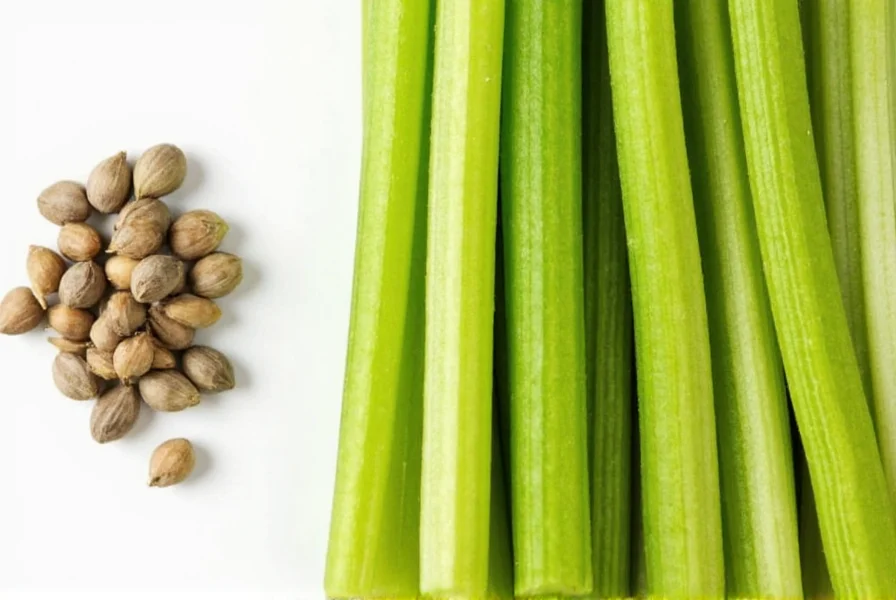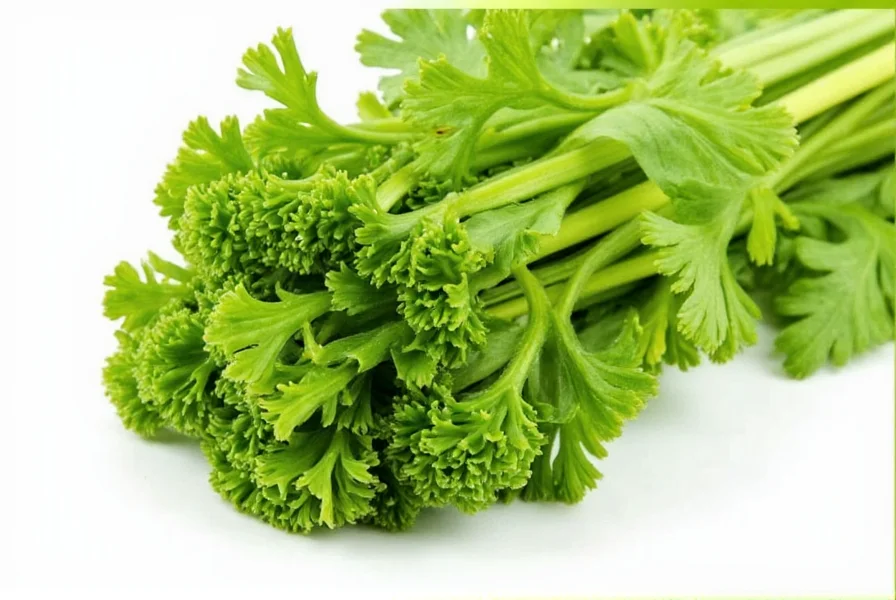Understanding the relationship between celery seeds and fresh celery is crucial for successful recipe substitutions. Many home cooks mistakenly believe these ingredients are interchangeable, but their flavor profiles and culinary applications differ substantially. This guide provides precise substitution ratios and practical alternatives when you need a celery seed substitute for celery or vice versa.
Understanding Celery Seeds vs. Fresh Celery
Celery seeds come from the fruit of the celery plant (Apium graveolens) and contain concentrated essential oils that give them their intense flavor. Fresh celery refers to the crisp stalks we commonly use in salads, soups, and snacks. The key differences include:
| Characteristic | Celery Seeds | Fresh Celery |
|---|---|---|
| Flavor Intensity | 8-10 times stronger | Mild, vegetal |
| Texture | Hard, small seeds | Crisp, watery stalks |
| Primary Use | Seasoning, pickling | Raw consumption, cooking |
| Flavor Notes | Pungent, earthy, slightly bitter | Subtle, fresh, mildly salty |
Proper Substitution Ratios
When substituting celery seed for fresh celery, precision matters. The concentrated flavor means you need significantly less:
- For fresh celery stalks: Use 1\/8 teaspoon celery seeds per stalk of fresh celery required, plus add 1-2 tablespoons of finely diced cucumber or jicama for texture
- For celery seeds: Use 1-2 stalks of fresh celery, finely minced, per teaspoon of celery seeds called for in the recipe
These ratios work best in cooked dishes like soups, stews, and casseroles where texture matters less. For raw applications like salads, substitutions become more challenging due to the texture difference.

Best Alternatives When Neither Is Available
If you lack both celery seeds and fresh celery, consider these flavor-appropriate substitutes based on your recipe type:
For Fresh Celery Substitutes
- For crunch: Fennel bulb (similar texture with mild anise flavor)
- For flavor: A combination of 1 part parsley + ½ part dill + ¼ part lemon zest
- In soups/stews: Leek whites or bok choy stems
For Celery Seed Substitutes
- Dry rubs/marinades: Lovage leaves (1:1 ratio) or dried dill seed (use 50% more)
- Pickling: Mustard seeds with a pinch of asafoetida powder
- General seasoning: Celery salt (reduce additional salt by 75%)
Recipe-Specific Substitution Guidance
Certain dishes handle substitutions better than others. Understanding which recipes can accommodate celery seed substitute for celery replacements prevents culinary disasters.
Dishes Where Substitutions Work Well
- Stocks and broths: Celery seeds work better than fresh celery here as their flavor concentrates during simmering
- Slow-cooked dishes: The long cooking time mutes the intensity difference between seeds and stalks
- Spice blends: Use celery seeds when fresh isn't practical for shelf-stable mixes
Dishes to Avoid Substituting
- Raw salads: Texture differences are too pronounced
- Creamy dips: Celery seeds create unpleasant gritty texture
- Celery-centric dishes: Waldorf salad, celery soup, or celery juice

Common Substitution Mistakes
Many home cooks make these errors when attempting celery seed substitute for celery replacements:
- Using equal measurements: Treating 1 stalk = 1 teaspoon seeds creates overpowering flavor
- Ignoring texture needs: Forgetting that fresh celery provides crunch that seeds cannot replicate
- Adding too late: Adding celery seeds to finished dishes where their harsh flavor doesn't mellow
- Not adjusting salt: Celery seeds contain natural sodium compounds that affect overall saltiness
For best results with celery seed substitute for fresh celery, add seeds early in the cooking process to allow their flavor to mellow and distribute evenly. When using fresh celery as a celery seed replacement, mince it very finely and add it toward the end of cooking to preserve some texture.
Storage Tips for Maximum Flavor
Proper storage affects how well substitutions will work:
- Celery seeds: Store in airtight container away from light; retain potency for 2-3 years
- Fresh celery: Wrap in aluminum foil and store in vegetable drawer; lasts 2-3 weeks
- Pre-minced celery: Freeze in ice cube trays with water for future soup use
Older celery seeds lose potency, requiring slightly more for substitution. Fresh celery that's limp won't provide the necessary crunch in raw applications.











 浙公网安备
33010002000092号
浙公网安备
33010002000092号 浙B2-20120091-4
浙B2-20120091-4